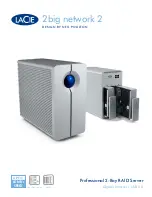
DATADISK FUNCTIONS
15
SECTION 4
DATADISK
FUNCTIONS
THEORY OF OPERATION
SYSTEM
EXCLUSIVE
DATADISK
is able to work because the data is stored in the form of
System Exclusive (or sysex)
files. System Exclusive is the unique
way that each manufacturer identifies its own particular data. This
allows data from one manufacturers equipment not to be mistaken
for another manufacturers when it is sent and stored.
When
DATADISK
is in the Receive mode, either the first byte, or the
first three bytes, of information received is the manufacturer ID. In
most cases,
DATADISK
will identify both the brand and model of the
equipment that it receives the system exclusive data from. If the
data is from an unknown manufacturer,
DATADISK
will display "ID
xxH" for 1 byte IDs or "xxxxxx" for 3-byte ids (where xx or xxxxxx is
the manufacturer ID number in hexidecimal) instead of the
manufacturer's name. This will not confuse how the data is stored
by
DATADISK,
or loaded by the unknown piece of equipment,
however.
RECEIVE MODES
DATADISK
normally receives data in the Receive One Sysex mode.
After the manufacturer ID bytes identify the unit,
DATADISK
begins
storing data to disk and continues until it receives an End System
Exclusive command. Some synthesizers or MIDI devices will send
multiple messages, one after the other, which
DATADISK
will
recognize and still save under the same file as long as there is no
more than 1/2 second delay between the end of one message and
the beginning of the next.
If there is more than 1/2 second but less than 1 second, then
DATADISK
will have stored the first file but will not have had enough
time to store the directory of that file before the next set of MIDI
messages arrive. When this occurs,
DATADISK
will display "MIDI
OVERFLOW" and suggest that you use Receive Mult mode.
Get user manuals:
















































